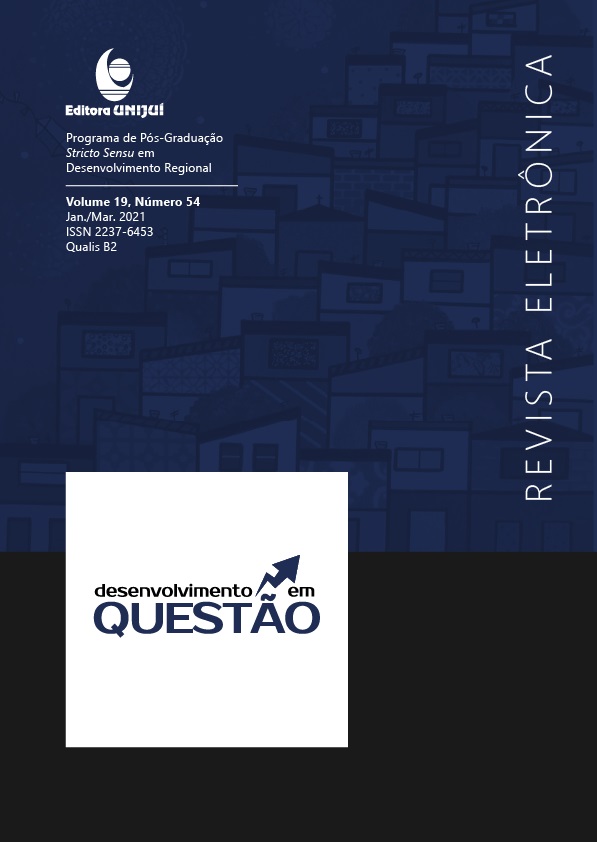GOVERNANCE IN THE APL OF AÇAÍ IN THE MUNICIPALITY OF IGARAPÉ-MIRI AND ITS IMPLICATION FOR LOCAL DEVELOPMENT
DOI:
https://doi.org/10.21527/2237-6453.2021.54.234-249Keywords:
Local Productive Arrangement; Local Development; GovernanceAbstract
Local development practices with endogenous bases are capable of transforming territories into productive units that propel socioeconomic advances. Such initiatives can be built on the establishment of forms of governance shaped by the creation of interaction bonds and coordination mechanisms. In this sense, this article presents: the characterization and interrelations of the agents of the Local Productive Arrangement - APL - of the açaí in the municipality of Igarapé-Miri and the definition of the type of governance existing in the Arrangement. In order to reach the proposed objective, a qualitative and descriptive research of the theoretical and field type was developed, with the aid of bibliographical sources and interviews. The results show how the agents interrelate in the APL, how governance is currently structured and what implications for local development in the municipality
Downloads
Published
How to Cite
Issue
Section
License
By publishing in Revista Desenvolvimento em Questão, authors agree to the following terms:
All works are published under the Creative Commons Attribution 4.0 International License (CC BY 4.0), which allows:
Sharing — to copy and redistribute the material in any medium or format;
Adaptation — to remix, transform, and build upon the material for any purpose, even commercially.
These permissions are irrevocable, provided that the following terms are respected:
Attribution — authors must be properly credited, a link to the license must be provided, and any changes made must be indicated.
No additional restrictions — no legal or technological measures may be applied that legally restrict others from doing anything the license permits.
Notices:
The license does not apply to elements that are in the public domain or covered by legal exceptions.
The license does not grant all necessary rights for specific uses (e.g., image rights, privacy, or moral rights).
The journal is not responsible for the opinions expressed in the articles, which are the sole responsibility of the authors. The Editor, with the support of the Editorial Board, reserves the right to suggest or request modifications when necessary.
Only original scientific articles presenting research results of interest that have not been previously published or simultaneously submitted to another journal with the same purpose will be accepted.
Mentions of trademarks or specific products are intended solely for identification purposes and do not imply any promotional relationship by the authors or the journal.
License Agreement (for articles published from 2025 onward): Authors retain the copyright to their article and grant Revista Desenvolvimento em Questão the right of first publication.











